BLOG SERIES Intune Suite Part1:Enterprise App Management
Edited 04/07/2025
ESP Blocking Apps support & Device Preparation Policy

In March 2023, Microsoft introduced the Microsoft Intune Suite, which can be purchased as an add-on to the existing Intune plan. This suite offers several capabilities and features. Over the past two years, many of these features have matured and received enhancements, making it a good time to revisit the Intune Suite, could this be a hidden gem?
In this blog series, I will take a closer look at some of the features of the Intune Suite and describe the capabilities of these products.
Part 1: Enterprise App Management
Enterprise App Management
The safest device is one without any software 😊. However, that's not very user-friendly or productive, so we need to install software. A common challenge is application delivery and maintenance of installed applications on managed devices. There are some great community solutions and third-party vendor software available to package and maintain your applications, but as I mentioned in the introduction, we will take a closer look at what Microsoft has to offer. Microsoft's solution for this in the Intune Suite is Enterprise App Management.
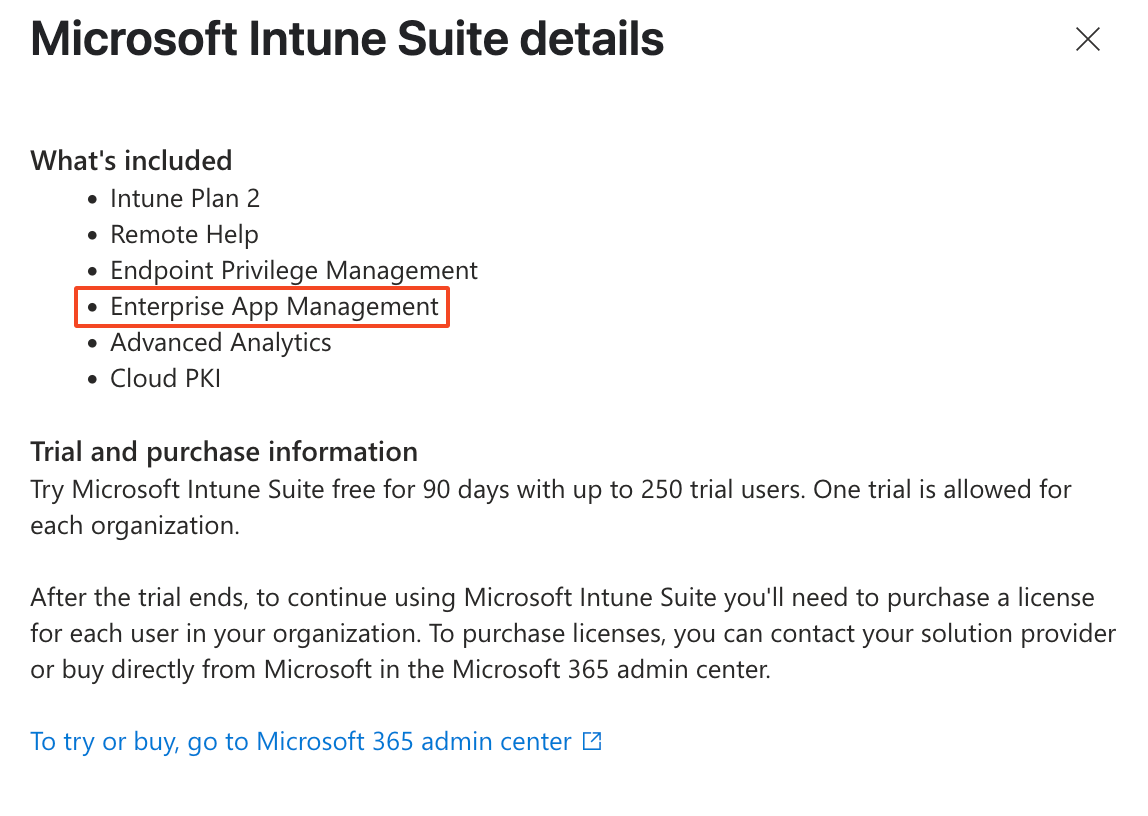
With Enterprise App Management, we can install and update applications from the Enterprise Catalog. In this blog article, I will describe how to add and update an application using these features. You will need a license for every users thats uses the feature. Enterprise App management is part of the Intune Suite license and can also be purchased as a standalone feature.
Add an app
Let's start by adding an app from the Enterprise Catalog. This process is very simple and similar to adding a regular app:
- From the Intune Portal, browse to the Apps section.
- Select Windows apps.
- Choose the Enterprise Catalog app in the Select app type section. This option will be available if you have the Intune Suite license.

To install an app, start by searching for it in the Enterprise app Catalog, which has over more then 450 apps listing at the moment of writing.
1. Select search the Enterprise app Catalog.
2. Type or search the app.
3. Select the app you want to add.

Once you have selected the app, the necessary information will be prefilled. You will then have the option to display the app in the company portal.
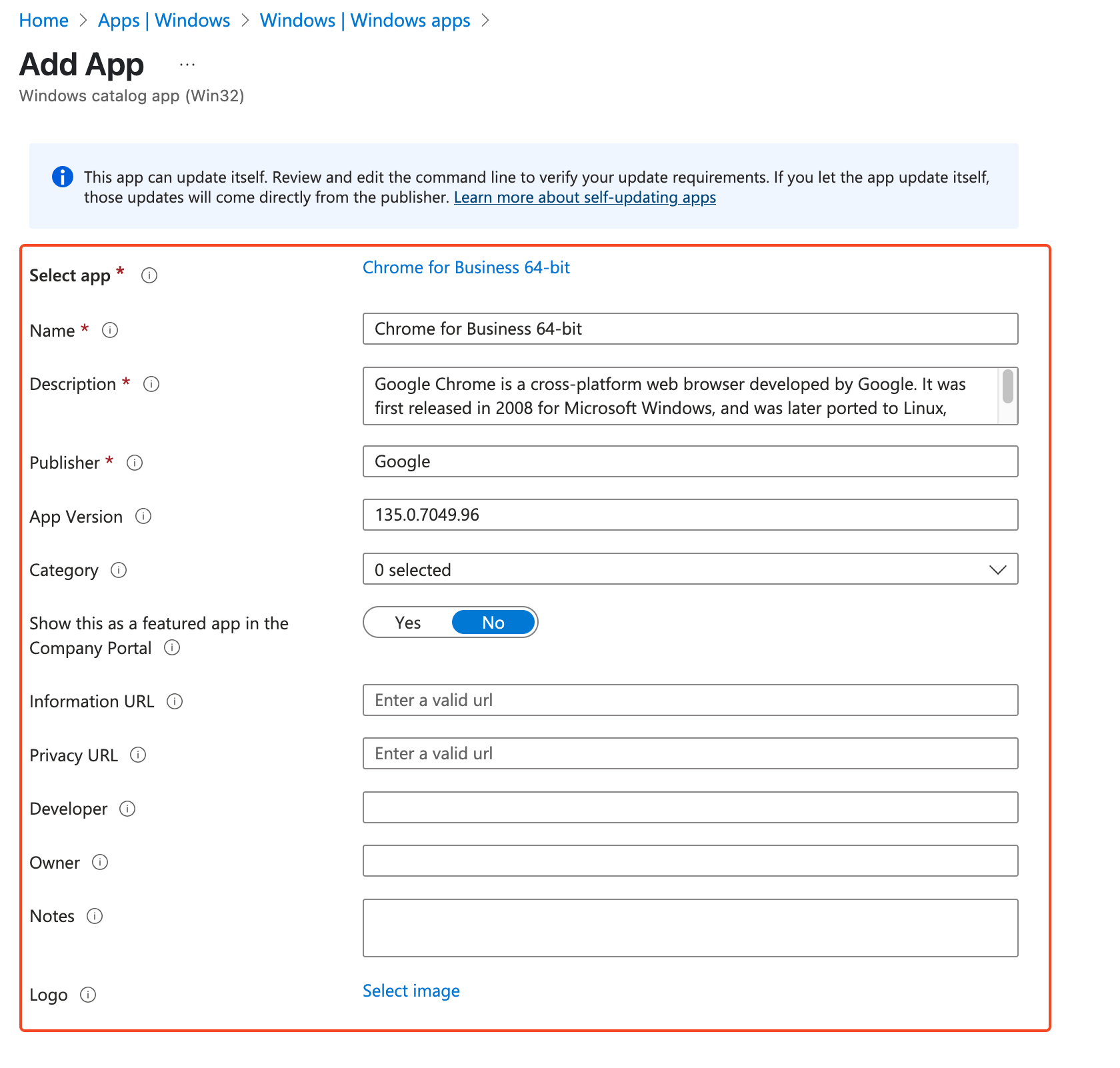
In the Program section, the install and uninstall commands are already filled in, so you don't have to worry about the correct install parameters.
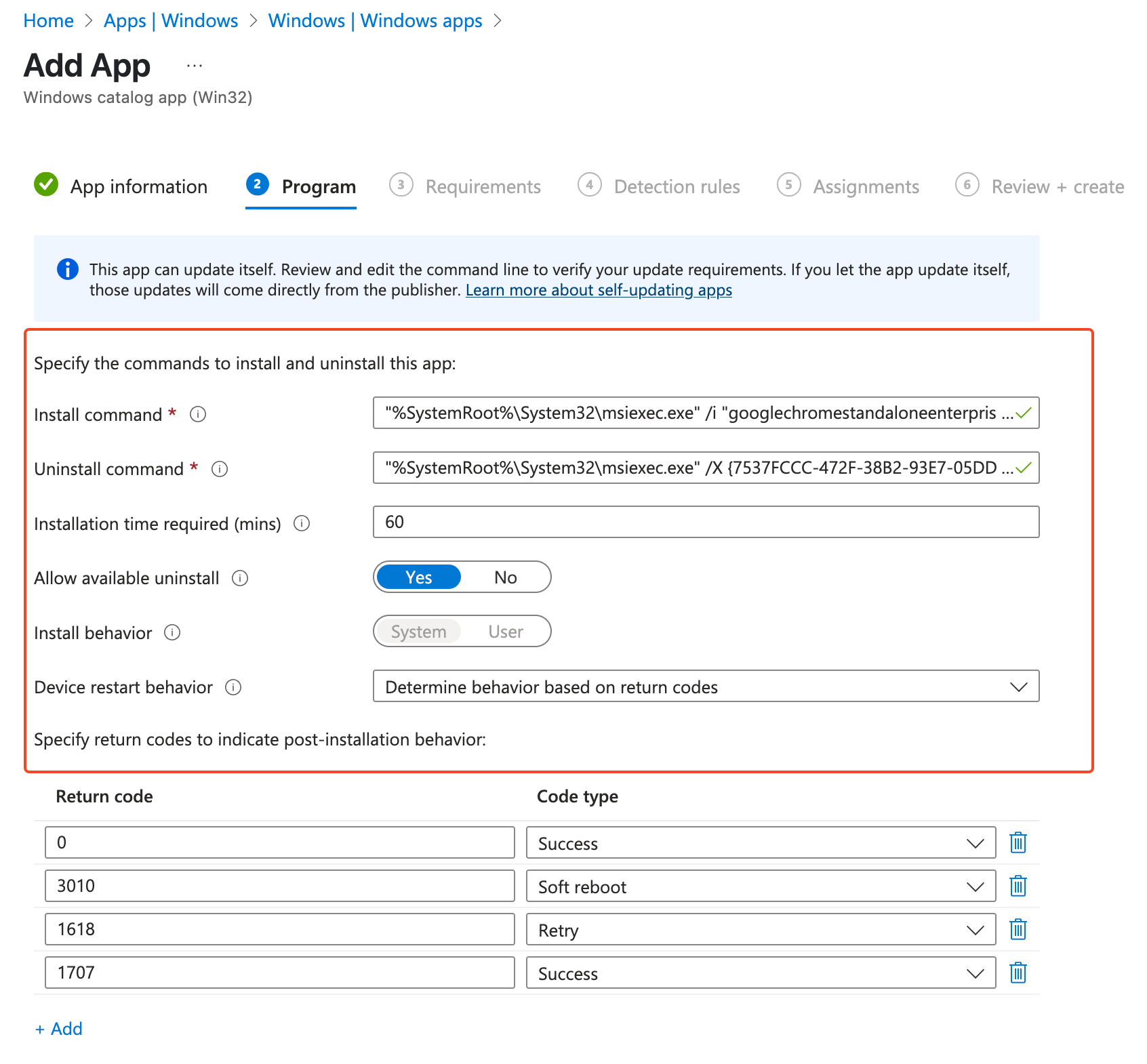
In the Detection Rules section, the detection is also pre-filled for you.
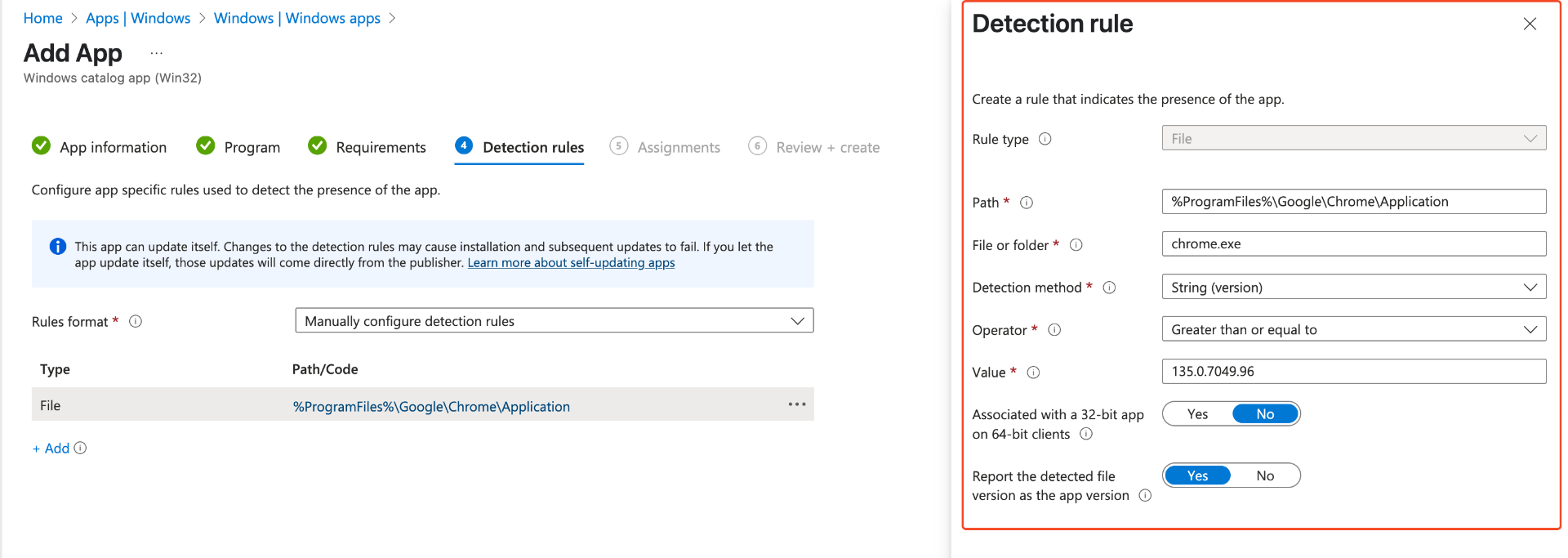
Head over to the assignments and assign the app to the desired user or device group. Your app is ready, nice and smooth 😉
Update an App
Updating apps with Enterprise App Management is straightforward. Here's how you can do it:
From the Intune Portal, navigate to the Apps overview. You'll see a notification area that informs you about Enterprise Apps with available updates. Click on this message, and you'll be guided to the apps that have updates
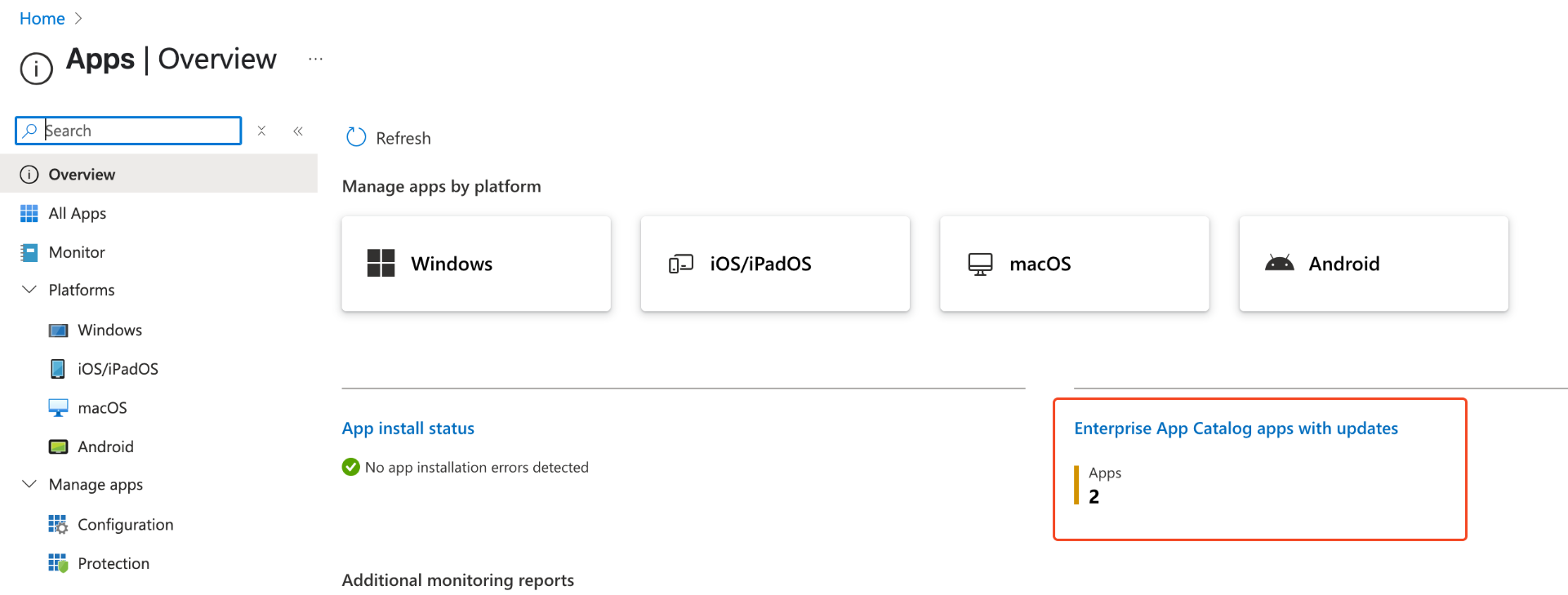
When you click on the banner, you are guided to the overview for the apps that have updates available.

Select the app you wan't to update, and select Update.

You are guided to the supersedence section. Intune will create another app installation with a supersedence rule.
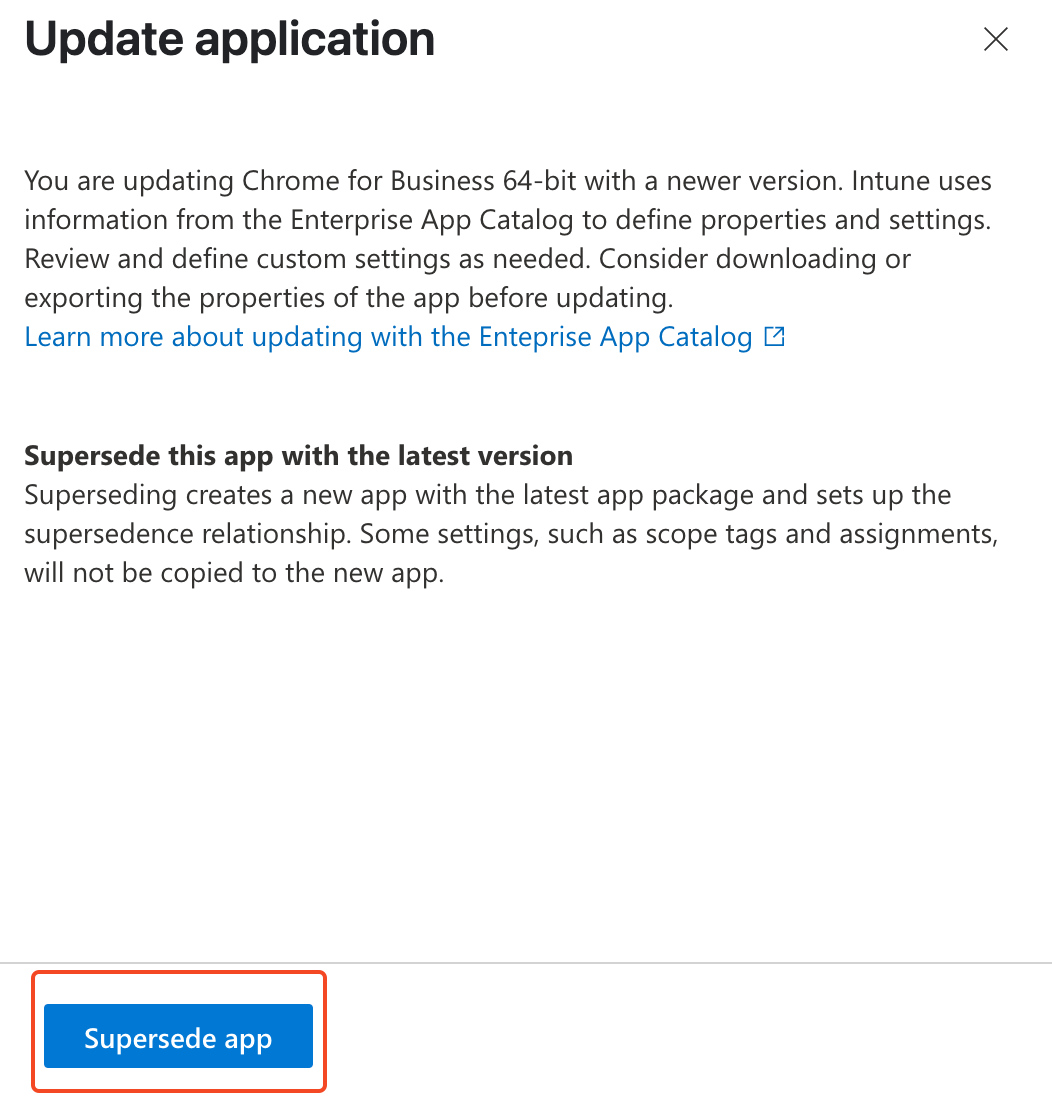
Attach the app to the corresponding group. All information is already prefilled. Head over to the supersedence section, where you can choose to uninstall the previous version.
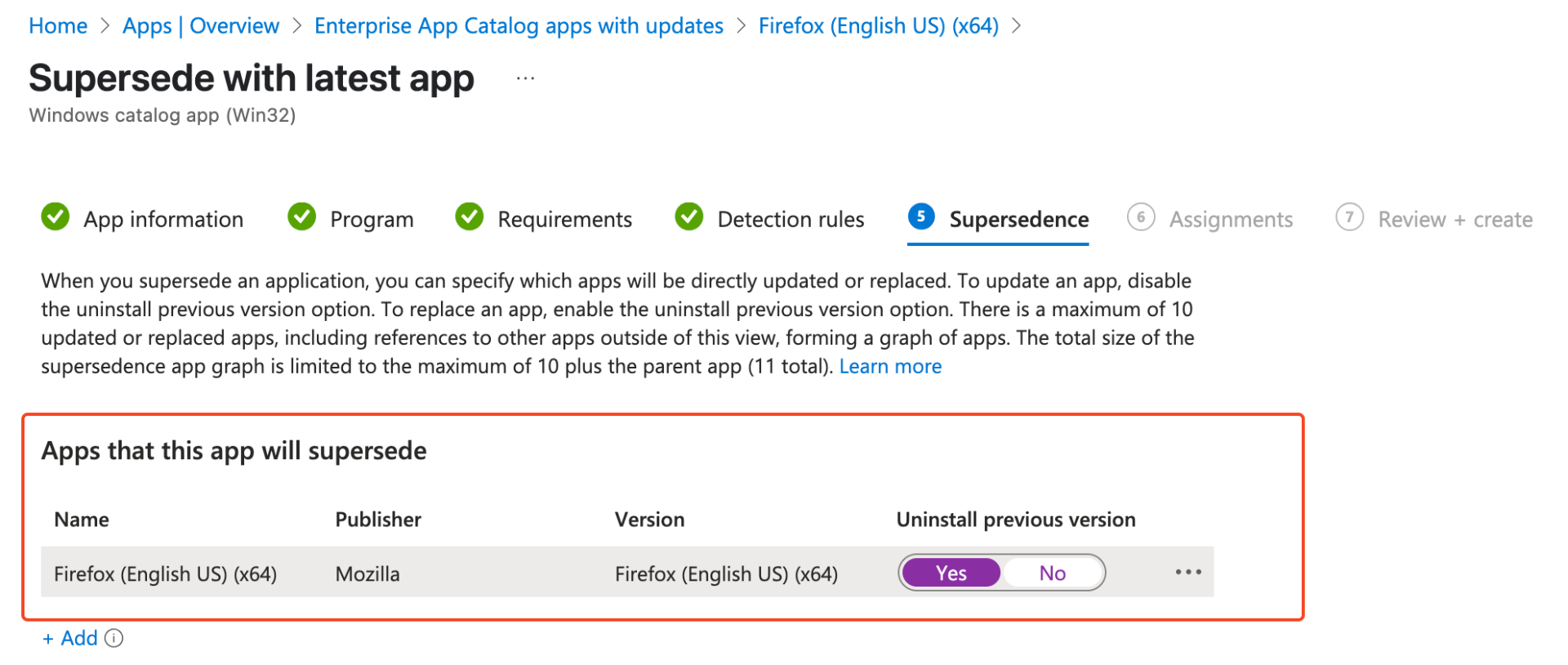
In the apps section, we can see another installation of Firefox with a different version number. When the older version is no longer installed, we can remove the supersedence rule and remove the app from Intune.
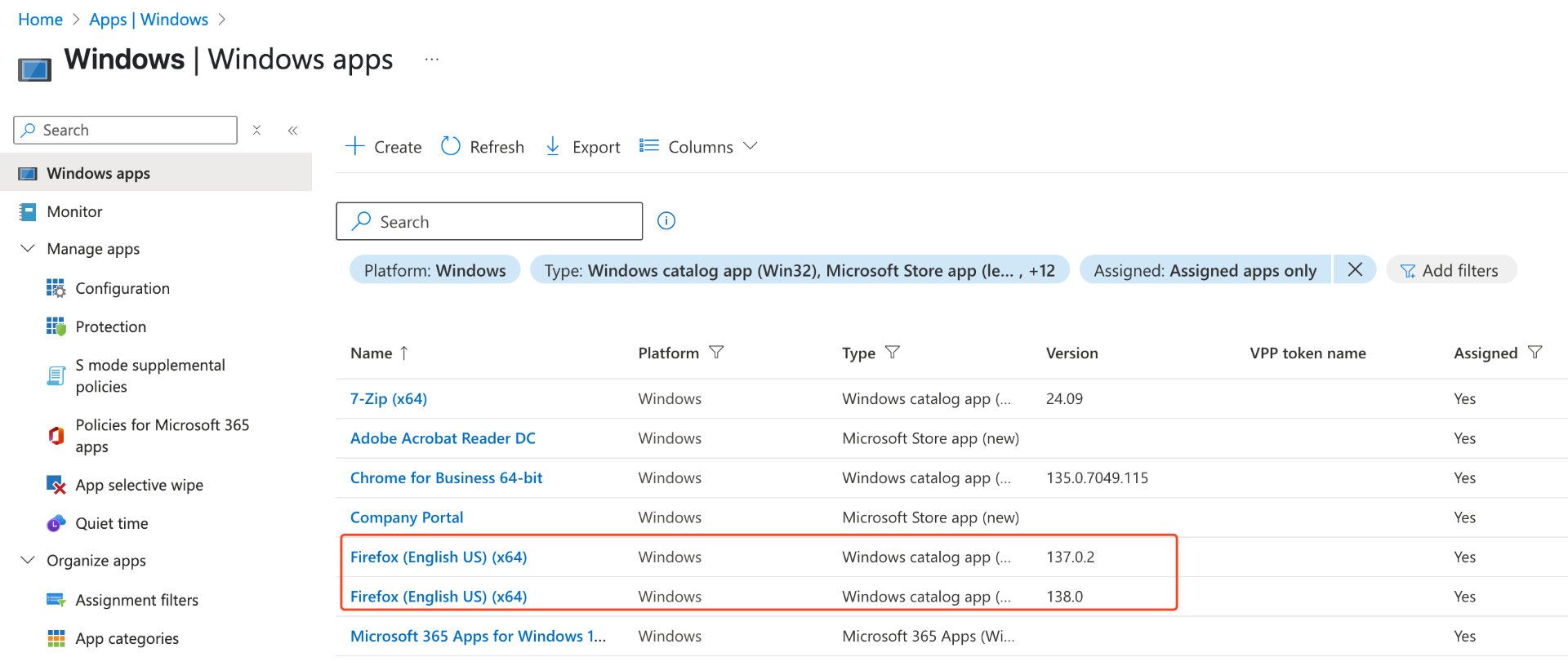
Self-updating apps
Some applications have the option for self-updating. You will see a banner on the app overview when an app supports this. The clients will receive the update from the app publisher, but the app version offered by Intune will remain the "older" version. According to Microsoft documentation, Intune ensures that the app is at least at a target minimum version.

When the update is installed on the client, the app version is updated in the managed apps section of the client, the update is preformed by the publisher on the device.

ESP Blocking Apps
edited 04/07/2025
Microsoft has added the support for Enterprise Application Management and AutoPilot as blocking apps!
Intune Portal > Devices > Enrollment > Enrollment Status Page
Select the ESP page, head-over to the blocking apps, select the Enterprise Application Management Apps you want to add.
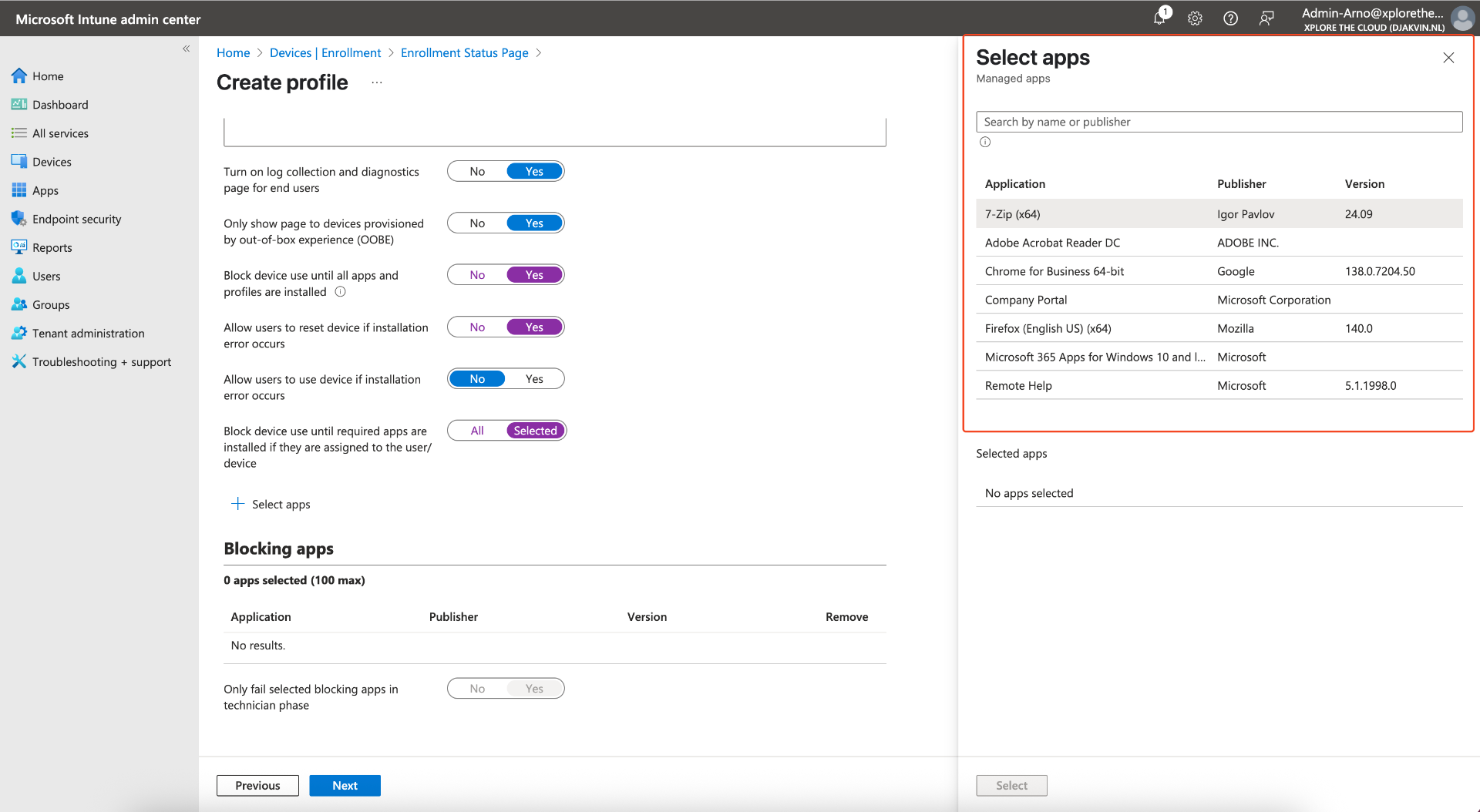
Device Preparation Policy Required Apps
edited 04/07/2025
Microsoft also has added the support for Enterprise Application Management apps in the Device Preparation Policies!.
Intune Portal > Devices > Enrollment > Device Preparation Policies
You can now add the Enterprise Catalog apps into your profile.
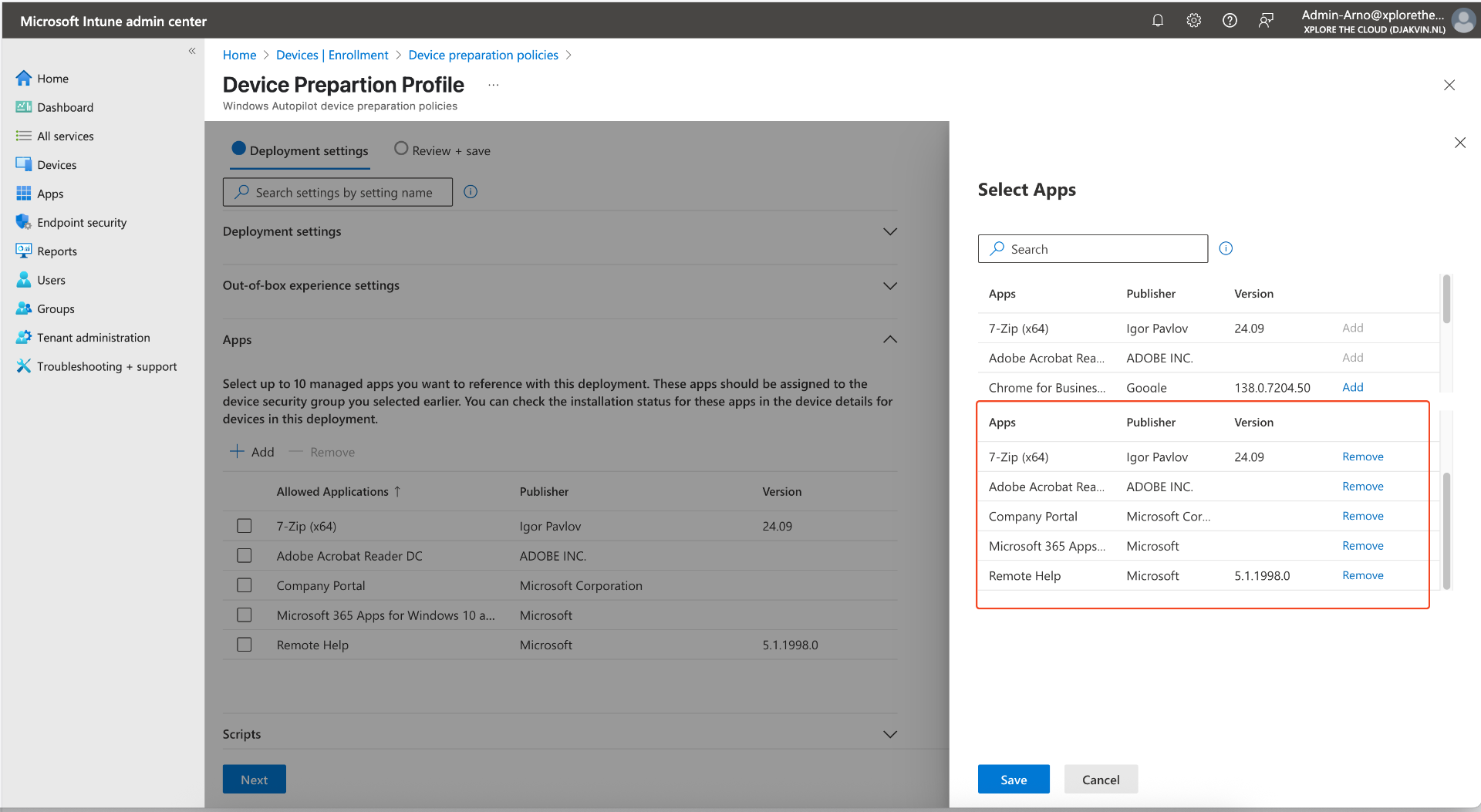
Recap:
Enterprise App Management simplifies the process of installing and updating applications on devices. The ability to handle self-updating apps further streamlines the management process, ensuring that applications remain up-to-date with minimal intervention.
The Supersedence functionality provides benefits in keeping the application up to date on newly installed devices. However, the process of monitoring duplicate applications can be time-consuming but it has benefits that the required application information is prefilled.
Overall, the Enterprise App Management option in the Intune Suite can represent a valuable tool for organizations looking to enhance their application delivery from a single tool without needing community solutions and or third-party vendors. As mentioned before, Enterprise App Management can also be purchased as a stand-alone offer if organizations only need this functionality and not the whole Intune Suite.
Stay Intune(d) for the next Blog series about another product from the Intune Suite.
